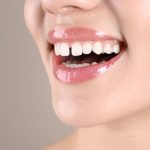Gaps between teeth, also known as diastemas, are a common dental concern for many individuals. While some embrace their unique smile, others may feel self-conscious about the gaps and seek ways to close them for aesthetic or functional reasons. Traditionally, braces have been the go-to solution for correcting gaps, especially for larger gaps or when other alignment issues are present. However, for those who prefer not to undergo lengthy orthodontic treatments, cosmetic dentistry offers several alternatives to fix gaps without braces. In this article, we’ll explore the various cosmetic dental treatments that can effectively close gaps and enhance your smile.
Understanding Diastemas: Why Do Gaps Form?
Before diving into the cosmetic solutions, it’s essential to understand why gaps form between teeth in the first place. Gaps can develop for a variety of reasons, including:
- Genetics: In many cases, diastemas are simply a result of genetics. Some people are born with extra space between their teeth, which may be more pronounced in certain areas, such as between the front teeth.
- Jawbone Discrepancy: If the size of the jawbone is too large in comparison to the size of the teeth, gaps can form between the teeth.
- Thumb Sucking: Prolonged thumb sucking during childhood can push the teeth forward and create gaps, particularly between the front teeth.
- Tongue Thrusting: The pressure from tongue thrusting (pushing the tongue against the front teeth when swallowing) can cause the front teeth to separate, leading to gaps.
- Gum Disease: Periodontal disease, which affects the gums and the bone that supports the teeth, can cause teeth to shift and create gaps as the supporting structures weaken.
- Tooth Loss: Missing teeth can result in gaps, as the adjacent teeth may drift into the empty space over time.
Whether the gap is a cosmetic concern or a functional issue, cosmetic dentistry can provide solutions to close the gap and improve the overall appearance of your smile without the need for braces.
Cosmetic Dentistry Alternatives to Braces for Closing Gaps
For individuals who want to close gaps without undergoing orthodontic treatment, cosmetic dentistry offers several effective options. These treatments focus on enhancing the appearance of the teeth and can often provide immediate or near-immediate results. Let’s explore the most common cosmetic dentistry treatments used to fix gaps between teeth.
1. Dental Bonding
Dental bonding is one of the most popular and least invasive cosmetic treatments for closing gaps between teeth. It involves the application of a tooth-colored resin material to the teeth, which is then sculpted to fill in the gaps and create a more uniform appearance. The resin is carefully matched to the color of your natural teeth, so the result looks seamless and natural.
How It Works:
- The dentist begins by preparing the teeth by lightly etching the surface and applying a bonding agent.
- Next, the tooth-colored resin is applied to the teeth and molded to fill in the gap.
- The resin is then hardened using a special curing light.
- Once hardened, the dentist shapes and polishes the resin to blend it with the surrounding teeth.
Advantages of Dental Bonding:
- Quick and Painless: Dental bonding can typically be completed in a single visit, and the procedure is relatively painless.
- Affordable: Bonding is one of the most cost-effective cosmetic dental treatments.
- Minimally Invasive: Little to no enamel needs to be removed, making bonding a conservative option for closing gaps.
Limitations of Dental Bonding:
Durability: While bonding is effective, it is not as durable as other treatments like veneers or crowns. The bonding material can chip or stain over time and may need to be replaced every few years.
Best for Small Gaps: Bonding is most effective for closing small to moderate gaps. For larger gaps, other treatments may be more appropriate.
2. Porcelain Veneers
Porcelain veneers are a more durable and long-lasting option for closing gaps between teeth. Veneers are thin, custom-made shells of porcelain that are bonded to the front surface of the teeth. They are designed to improve the appearance of the teeth by changing their shape, size, and color.
How It Works:
- The dentist begins by preparing the teeth, which may involve removing a small amount of enamel to ensure the veneers fit properly.
- Impressions of the teeth are taken and sent to a dental lab, where the veneers are custom-made to match the patient’s specifications.
- Once the veneers are ready, they are bonded to the teeth using a strong adhesive.
- The dentist then makes any necessary adjustments to ensure a perfect fit and appearance.
Advantages of Porcelain Veneers:
Natural Appearance: Porcelain veneers mimic the translucency and texture of natural teeth, making them virtually indistinguishable from real teeth.
Durable and Long-Lasting: Veneers are highly durable and can last for 10-15 years or longer with proper care.
Customizable: Veneers can be customized to achieve the desired shape, size, and color, making them ideal for both closing gaps and enhancing the overall appearance of the smile.
Limitations of Porcelain Veneers:
- Cost: Veneers are more expensive than bonding, but they also offer longer-lasting results.
- Irreversible: Because enamel is typically removed during the preparation process, veneers are considered an irreversible treatment. Once you have veneers, they will need to be replaced if damaged or worn over time.
- Multiple Visits: Veneer placement usually requires multiple visits to complete, as the veneers must be custom-made in a lab.
3. Dental Crowns
Dental crowns are another option for closing gaps between teeth, especially when the gap is caused by a damaged or misshapen tooth. A crown is a cap that completely covers the tooth, restoring its shape, size, and function. Crowns are custom-made to match the appearance of the surrounding teeth and can effectively close gaps while providing additional strength to the tooth.
How It Works:
- The dentist prepares the tooth by removing a portion of the outer structure to make room for the crown.
- Impressions of the tooth are taken and sent to a dental lab, where the crown is fabricated.
- A temporary crown may be placed while the permanent crown is being made.
- Once the permanent crown is ready, it is bonded to the tooth.
Advantages of Dental Crowns:
- Strength and Durability: Crowns provide added strength to the tooth and can last for many years.
- Custom Fit: Crowns are custom-made to fit the tooth and can be designed to close gaps and improve the appearance of the smile.
- Versatile: Crowns can be used to address a variety of dental issues, including gaps, decay, and damage.
Limitations of Dental Crowns:
- Cost: Crowns are generally more expensive than bonding and may require more extensive preparation of the tooth.
- Multiple Visits: Like veneers, crowns require multiple visits to complete the process, as the crown must be custom-made.
4. Invisalign or Clear Aligners (For Larger Gaps)
While not a traditional cosmetic dentistry treatment, clear aligners like Invisalign can also be an effective solution for closing gaps, especially when the gaps are larger or if other alignment issues are present. Invisalign is a modern orthodontic treatment that uses a series of clear, removable aligners to gradually shift the teeth into the desired position.
Unlike traditional braces, Invisalign aligners are nearly invisible and can be removed for eating, brushing, and flossing. Although Invisalign typically takes longer than other cosmetic treatments like bonding or veneers, it can provide more comprehensive results for individuals with significant gaps or misalignment.
Advantages of Invisalign:
- Invisible: The aligners are clear and discreet, making them a popular choice for adults and teenagers who want to straighten their teeth without metal braces.
- Removable: The aligners can be removed for eating and cleaning, making them more convenient than traditional braces.
- Comprehensive: Invisalign can address more than just gaps, including issues like crowding, overbites, and underbites.
Limitations of Invisalign:
- Time-Consuming: Invisalign treatment typically takes several months to over a year to complete, depending on the severity of the gaps and alignment issues.
- Cost: Invisalign is generally more expensive than cosmetic treatments like bonding or veneers.
Deciding Which Treatment is Right for You
The best cosmetic treatment for closing gaps without braces depends on several factors, including the size of the gap, your dental health, and your personal preferences. Here are some questions to consider when deciding which treatment is right for you:
- How large is the gap? If the gap is small, dental bonding may be the simplest and most cost-effective solution. For larger gaps, veneers, crowns, or Invisalign may be more appropriate.
- Do you want a quick fix? Dental bonding and veneers can often be completed in one or two visits, making them ideal for individuals seeking immediate results. Invisalign, on the other hand, requires a longer commitment but can provide more comprehensive results.
- What is your budget? Dental bonding is typically the least expensive option, while veneers, crowns, and Invisalign are more costly. Consider your budget when evaluating your options.
- Are you concerned about durability? Veneers and crowns are more durable than bonding and can last for many years. If you’re looking for a long-term solution, these treatments may be the better choice.
- What are your cosmetic goals? If you’re looking to enhance the overall appearance of your smile beyond just closing gaps, veneers or crowns may be the best option, as they can also improve the shape, size, and color of your teeth.
Cosmetic Dentistry Provides Effective Solutions for Closing Gaps
Cosmetic dentistry offers a variety of effective solutions for closing gaps between teeth without the need for braces. Whether you opt for dental bonding, veneers, crowns, or Invisalign, you can achieve a more uniform and attractive smile with the right cosmetic treatment. Each option has its advantages and limitations, so it’s essential to consult with a qualified cosmetic dentist who can assess your individual needs and recommend the most appropriate treatment plan.
If you’re considering cosmetic dental treatment to fix gaps in your smile, All-On-4 Dental Implants offers a wide range of cosmetic services, including bonding, veneers, crowns, and more. With their expert team and advanced technology, All-On-4 Dental Implants can help you achieve the smile you’ve always wanted while providing the highest level of care and comfort.













